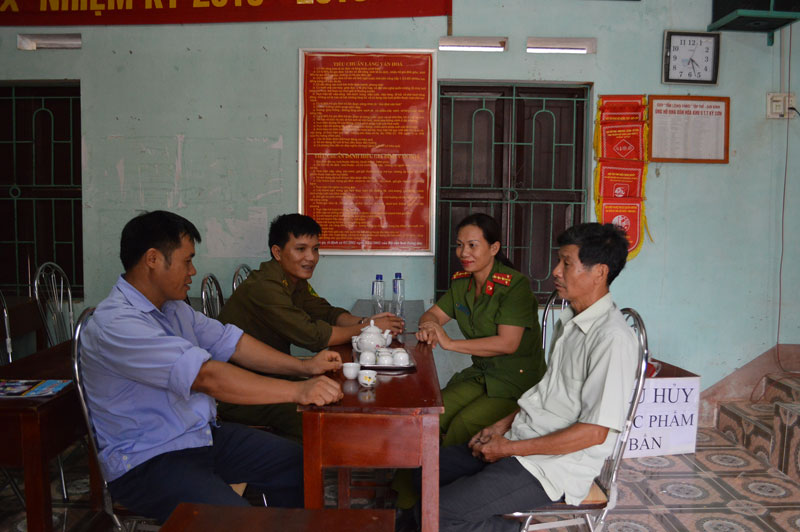
(HBO) – The self-managing group of families on environmental protection and climate change response in Sau Ha village, Thanh Luong commune (Luong Son district) of the northwestern province of Hoa Binh was launched at the start of July with 49 members.
Chairwoman of the district’s Fatherland Front Committee Nguyen Thi
Hoa said it was the fifth self-managing group in the commune. With the principle
of the people’s willingness, self-awareness, self-protection and self-funding,
the model has strongly expanded over the years.
Currently, the province is home to 4,225 self-managing groups on
all fields. Up to 340 residential areas, 69 communes, wards, towns, four
districts and cities are applying the model, building 1,598 self-managing
groups of families, 343 self-managing families and clusters and 842 streets
managed by women on environmental protection, among others. Some districts take
the lead in the number of groups, namely Yen Thuy with 895, Mai Chau 772, Lac
Son 730 and Lac Thuy 615.

Police
and people in Ky Son town (Ky Son district) discuss activities of self-managing
groups on security in Zone 5.
The self-managing model helps promote diligence and creativity,
along with potential and strengths of families, and enables them support each
other in science-technology, breeding stocks, capital and consumption of
products.
There are 431 self-managing groups on economy, especially the
"Helping each other in technology, breeding stocks and consumption” model in
Tan Lac district, the "Self-managing group of families works to enhance
economic growth”, the "Interest-free loan” and the "Household economy” in Hoa
Binh city. Activities of self-managing groups also tap potential of families
and raise their income, reduce poverty and grow rich.
Regarding cultural and social affairs, the province is home to
1,068 groups on environmental protection and population and family planning.
Meanwhile, as the establishment of self-managing groups on
security is viewed as an important task to ensure security and social order at
grassroots level, the number of groups on security is the highest among all
with 2,756. Notable groups include the "Villages of culture – defence”, the
"Self-managing group of families and residential areas on security”, the
"Self-managing family and parish” and the "Anti-criminal alarm”, among others./.
The Department of Education and Training of Hoa Binh province held a conference on March 18 to review the performance of the "Safe and Happy School" Project and set out tasks for 2025. The project, funded by the Taiwan Fund for Children and Families (TFCF), aims to create a safe, inclusive, and supportive learning environment for students. The event saw the attendance of representatives from the TFCF and 26 beneficiary schools.
With over 70% of their workers being women, trade unions across industrial parks (IPs) in Hoa Binh have been actively safeguarding their legal rights and interests while implementing initiatives to improve their income and well-being.
In recent years, the Hoa Binh provincial General Hospital has continuously innovated itself and improved the quality of medical services to meet the increasing needs of local people. With substantial investments in infrastructure and modern equipment, along with a team of highly qualified doctors and nurses, the hospital has gradually established itself as one of the leading medical units in the Northwestern region and a trusted destination for healthcare for people inside and outside the province.
From mastering the fundamentals of programming to achieving national recognition, the Programming Club of the Le Van Tam Primary School (STAR LVT28) in Hoa Binh city has made remarkable strides in the field of robotics.
The Ho Chi Minh Communist Youth Union Committee and the Vietnam Youth Federation chapter of Hoa Binh province organised a programme on March 12 to launch the "Digital Literacy" movement and an online quiz on the resolutions of the Vietnam Youth Federation congresses at all levels, as well as the Politburo's Resolution No. 57-NQ/TW on breakthroughs in the development of science, technology, innovation, and national digital transformation.
As climate change grows more unpredictable, the development of production forests has become essential - not just for economic growth, but for safeguarding the environment and maintaining ecosystem balance. By boosting local incomes, curbing natural disasters, preventing soil erosion, and protecting water resources, these forests play a crucial role in sustainable development.



